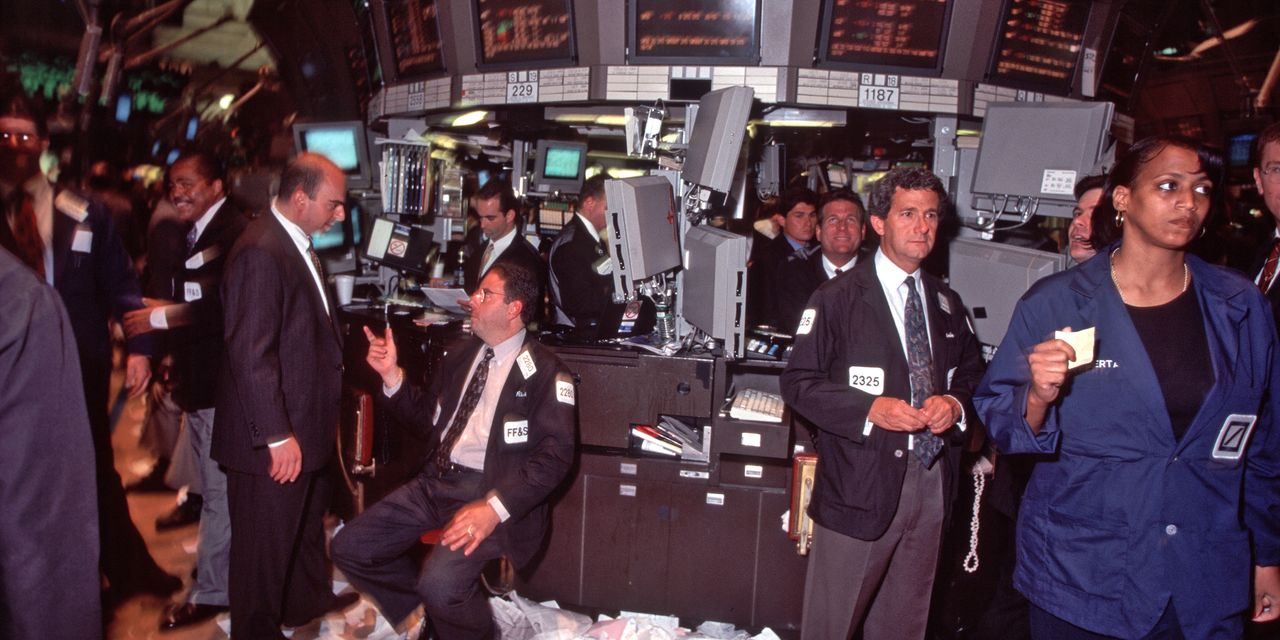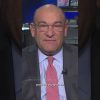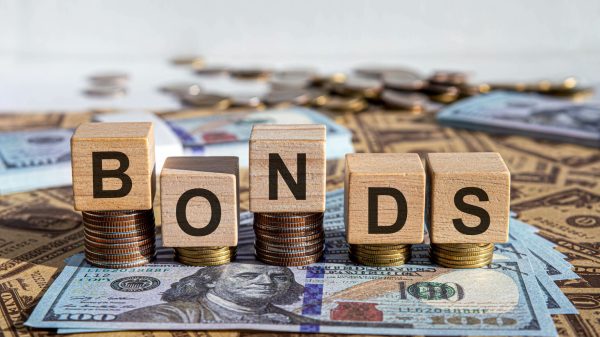For Wall Street, it was a turning point for risk-taking. After this, there was a growing perception that the Fed, by intervening to save systemically important institutions, was protecting the stock market from big declines.
Then-chairman of the Federal Reserve, Alan Greenspan, confirmed an “unwritten contract with Wall Street that committed the Fed to intervene to halt market declines,” says economist Edward Chancellor, author of 2022’s The Price of Time: The Real Story of Interest.
And the Fed has made good on that contract ever since. In particular, numerous corporate bailouts based on the LTCM model were undertaken in response to the 2007-10 subprime mortgage crisis, and again in 2023 to avert contagion from midsize lenders caught in an interest-rate squeeze.
As LTCM’s 25th anniversary approaches, critics say the problem is that everybody knows the Fed will do everything in its power to avert a financial meltdown. It creates a moral hazard: Investors, with little fear of losses, engage in reckless risk-taking. This creates bubbles (in stocks, housing, everything) that burst and start the cycle all over again.
“Greenspan and subsequent Fed chairs have never seemed to realize that excessive financial asset inflation (i.e., financial bubbles) is as damaging to the economy as is excessive real asset inflation,” the financial analyst Richard Bernstein said by email.
“Any form of excessive inflation—real or financial—damages the economy because there is ultimately a gross misallocation of capital,” Bernstein argues. “Does the U.S. economy really need Elon Musk going to Mars or Richard Branson taking space vacations?”
Not everyone agrees with this viewpoint. Among those who don’t is Ben Bernanke, Greenspan’s successor as Fed chair, who engineered the rescues of everything from banks to insurance companies to auto makers during the subprime mortgage crisis.
“All the funds used to prevent LTCM’s collapse came from its creditors, none from public sources,” he writes, adding that the hedge fund’s owners lost almost everything. “Hardly a path others would want to emulate.”
Yet, bubbles still grow, and bailouts still happen. The question now is what Jerome Powell’s Fed will do when it finally ends its current inflation-fighting regime. Some fear a return of an easy-money policy that will lead to more, and more dangerous, bubbles.
“We’ve had 25 years of bubble life,” Chancellor says, and at some point “monetary policy will lose its efficacy to sustain markets.” That is, the Fed won’t be able to engineer a soft landing.
Long-Term Capital Management was founded in 1994 by John Meriwether, who made his name in fixed-income arbitrage trading at Salomon before leaving under the cloud of a Treasuries scandal. With two Nobel Prize–winning economists and a host of Ph.D.s honing his secretive investing strategies, LTCM racked up returns of more than 40% in 1995 and 1996, after fees, far outpacing rivals.
LTCM’s “intellectual supermen had apparently been able to reduce an uncertain world to rigorous, coldblooded odds,” writes Roger Lowenstein in the best-selling When Genius Failed: The Rise and Fall of Long-Term Capital Management.
Still, LTCM seemed an unlikely candidate to spark a global financial panic, managing just $4.8 billion at the beginning of 1998. But it had also “amassed an amazing $100 billion in assets, virtually all of it borrowed,” Lowenstein writes, with most of Wall Street’s and Europe’s biggest banks on the hook. What’s more, thousands of derivative contracts—“essentially side bets on market prices”—added up to more than $1 trillion in market exposure, according to Lowenstein.
LTCM suffered its first monthly loss in June 1998. Little mind was paid until Aug. 17, when Russia defaulted and “saddled the world’s financial institutions, from blue-chip banks to the highest-flying hedge funds, with more than $8 billion in losses,” The Wall Street Journal wrote on Sept. 3, 1998.
“Long-Term’s loss”—$1.8 billion in August alone—“was by far the worst of the hits,” the Journal added.
On Sept. 23, New York Fed President William J. McDonough summoned the chiefs of Wall Street to his downtown Manhattan offices. There he “banged their heads together,” in the words of Barron’s Up & Down Wall Street columnist Kathryn M. Welling, and got them to agree on a $3.65 billion bailout, split among 14 lenders.
“The $300 million apiece that the Street’s leading lights tossed into the Long-Term Capital kitty looked like chump change,” she wrote, compared with potential losses from a bankruptcy. LTCM, in modern parlance, was “too big to fail.”
But, writing under the headline “Crony Capitalism, American-Style,” Welling also addresses the class resentment that such rescues can engender. “What else do you call it when the Fed corrals the fat cats at the helms of the Street’s biggest banks and brokerage houses all into one elegant room,” Welling wrote, to bail out a “gang of former colleagues.”
America’s strong populist tradition and distrust of “monied interests” has produced critics from Andrew Jackson to Donald Trump. Why should wealthy corporate executives and shareholders be rescued while the rest of the nation gets no relief from financial turmoil they create, they ask?
“Liquidate labor, liquidate stocks, liquidate the farmers, liquidate real estate,” Secretary of the Treasury Andrew Mellon is said to have told President Herbert Hoover—according to Hoover, anyway—after the Crash of 1929. “It will purge the rottenness out of the system.…enterprising people will pick up the wrecks from less competent people.”
Bernanke won a Nobel Prize in Economics for his writing on the Great Depression’s causes, and he blames the Fed of that time for worsening the pain by taking Mellon’s advice and doing nothing to halt the nation’s waves of bank runs. Faced with the 2007 subprime mortgage crisis, Bernanke wasn’t going to repeat that mistake.
By the time the crisis had passed, the Fed had helped engineer the rescues of Bear Stearns,
Fannie Mae,
Freddie Mac,
AIG,
Merrill Lynch, and GMAC, among others, while providing liquidity across the financial spectrum. The bailouts were controversial; Bernanke had to defend the AIG bailout in federal court. The period, however, is remembered for the one he didn’t save: Lehman Brothers.
“I can’t do justice to this in an email,” Bernanke told Barron’s in response to a request for comment, but he did suggest, for further reading, his 2022 book, 21st Century Monetary Policy: The Federal Reserve from the Great Inflation to Covid-19.
As the crisis unfolded, the Bernanke Fed immediately identified the importance of “too big to fail” concerns. “Because major financial firms are so interconnected, with wide webs of customers, creditors, and counterparties, we recognized early on that the uncontrolled failure of a large firm would magnify uncertainty and panic,” he writes.
This led the Fed to “mediate” the acquisition of investment bank Bear Stearns by
JPMorgan Chase,
in Bernanke’s words. It also drew a rebuke from 17 Republican congressmen, who cited the moral hazard of such rescues. Barron’s columnist Alan Ableson labeled Bernanke “Clueless Ben.”
Despite the criticism, the Fed continued to backstop systemically important companies. One it couldn’t save was Lehman, “whose extreme risk-taking had exposed it to crippling losses,” Bernanke wrote. With no larger bank willing to buy it, and unable to stand on its own, Lehman declared bankruptcy on Sept. 15, 2008.
The response: more rescues, provided by the Troubled Asset Relief Program. Passed by Congress to support the financial industry, TARP was eventually used to bail out
General Motors
and Chrysler, stretching the meaning of “systemically important.”
Bernanke, who was unanimously approved by the Senate for his first term at the Fed, was dismayed that his margin was just 70-30 for his second term, blaming it in part on “dislike in both parties of the bailouts.”
This year, Silicon Valley Bank and two other midsize lenders were taken over due to worries of further contagion in the financial system. To critics, these banks were built on the high-tech bubble—much of their deposits came from Silicon Valley start-ups—and rescuing them simply rewards reckless risk-taking.
“For the second time in 15 years,” according to a Wall Street Journal editorial on March 13, “regulators have encouraged a credit mania, and then failed to foresee the financial panic when the easy money stopped.”
The Journal added, “This is a de facto bailout of the banking system.”
Email: [email protected]
Read the full article here









